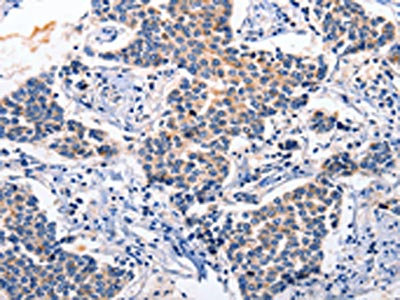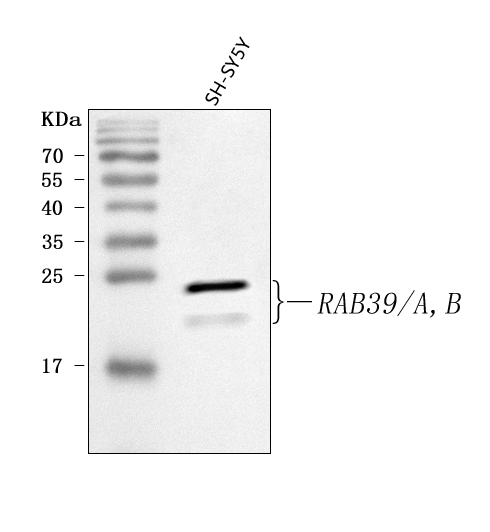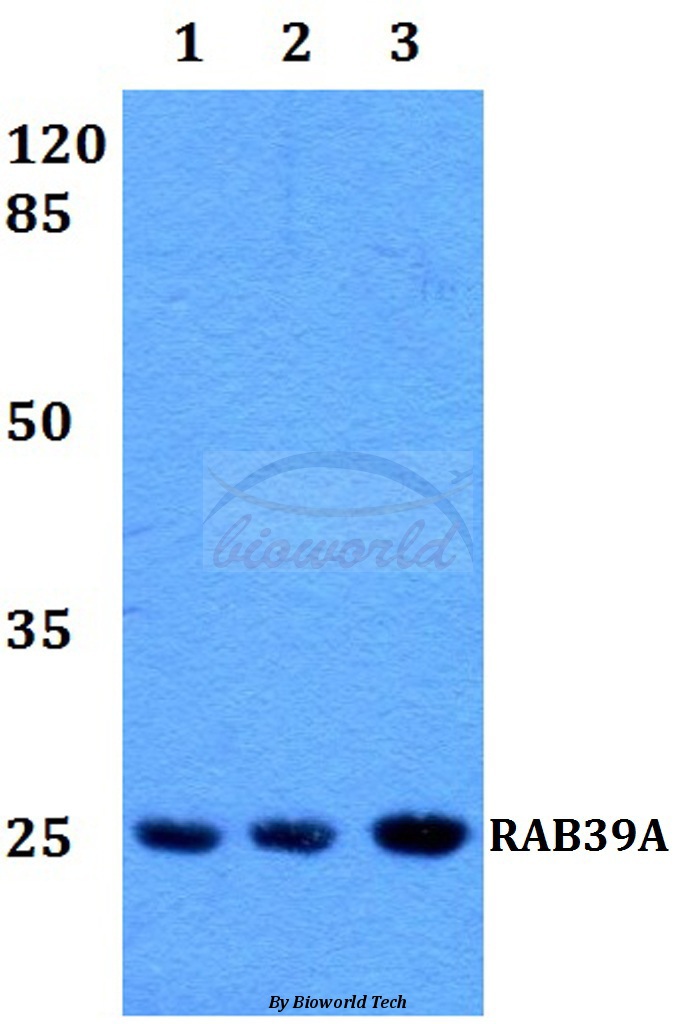
The image on the left is immunohistochemistry of paraffin-embedded Human breast cancer tissue using CSB-PA040885(RAB39A Antibody) at dilution 1/5, on the right is treated with synthetic peptide. (Original magnification: x200)
RAB39A Antibody
CSB-PA040885
ApplicationsELISA, ImmunoHistoChemistry
Product group Antibodies
ReactivityHuman, Mouse
TargetRAB39A
Overview
- SupplierCusabio
- Product NameRAB39A Antibody
- Delivery Days Customer20
- ApplicationsELISA, ImmunoHistoChemistry
- CertificationResearch Use Only
- ClonalityPolyclonal
- ConjugateUnconjugated
- Gene ID54734
- Target nameRAB39A
- Target descriptionRAB39A, member RAS oncogene family
- Target synonymsK28, RAB39, ras-related protein Rab-39A, RAB39, member RAS oncogene family, rab-39, rab-related GTP-binding protein
- HostRabbit
- IsotypeIgG
- Protein IDQ14964
- Protein NameRas-related protein Rab-39A
- Scientific DescriptionThis gene encodes a protein which is a member of the Rab family.The Rab family of proteins is a member of the Ras superfamily of monomeric G proteins.[1] Approximately 70 types of Rabs have now been identified in humans. Rab GTPases regulate many steps of membrane traffic, including vesicle formation, vesicle movement along actin and tubulin networks, and membrane fusion. These processes make up the route through which cell surface proteins are trafficked from the Golgi to the plasma membrane and are recycled. Surface protein recycling returns proteins to the surface whose function involves carrying another protein or substance inside the cell, such as the transferrin receptor, or serves as a means of regulating the number of a certain type of protein molecules on the surface.
- ReactivityHuman, Mouse
- Storage Instruction-20°C or -80°C
- UNSPSC41116161





